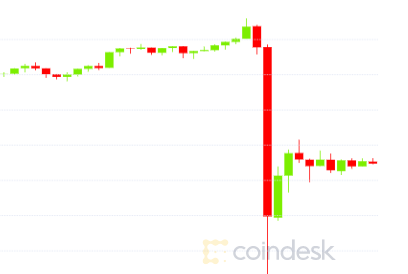Regulators Should Not ‘Front-Run’ Congress on Stablecoins
:format(jpg)/s3.amazonaws.com/arc-authors/coindesk/6a2e8840-ea66-4459-ab87-01b37b1ca784.jpeg)
Tuongvy Le is a Partner and the Head of Regulatory and Policy at Bain Capital Crypto, Bain Capital’s crypto-dedicated venture capital fund.
:format(jpg)/s3.amazonaws.com/arc-authors/coindesk/9fb6ffe4-6eb3-4c0e-b552-94cefe2d70fa.jpeg)
Khurram Dara is a Regulatory and Policy Principal at Bain Capital Crypto, Bain Capital’s crypto-dedicated venture capital fund.
There is a quietly emerging consensus among key stakeholders regarding one area of crypto regulatory policy – payment stablecoins. On Thursday, the House Financial Services Committee’s Subcommittee on Digital Assets, Financial Technology and Inclusion, will hold another hearing on stablecoins – the second on the subject in the last four weeks. Ahead of the hearing, two more drafts of bills were posted on the Committee’s website from Chair Rep. Patrick McHenry and from Ranking Member Rep. Maxine Waters – both variations of their joint draft that was under consideration by the committee last year. The latest hearing and newly circulated drafts signal the House’s commitment to introducing and passing a bill in this area.
While there are certainly differences of opinion among members of the Subcommittee on crypto, many appear to be aligned on a few key themes with respect to regulation of payment stablecoins. It may have been easy to miss during the cross-talk at last month’s hearing, but there was broad agreement among the testifying witnesses and many members of the Subcommittee that:
-
Congressional action is urgently needed on payment stablecoins;
-
Payment stablecoins backed 1:1 by cash or cash equivalents are distinct and separate from other types of non-payment stablecoins (which may use different mechanisms to maintain a “soft-peg” to the U.S. dollar or some other currency);
-
Payment stablecoin issuers should be subject to a prudential framework – similar to payments or banking regulation – with safeguards such as reserve and redemption requirements, segregation of assets, prohibitions on rehypothecation, restrictions on commingling of assets, and AML/KYC obligations; and
-
Maintaining U.S. dollar dominance and financial inclusion are critical public policy objectives that can be advanced with proper regulation and oversight of payment stablecoins.
What Congress has not done is propose regulating payment stablecoins through, say, a securities framework. Yet, one financial regulator, the SEC, appears poised to do just that. Given the legislative activity on stablecoins to date, financial regulators should not “front-run” Congress with regulation-by-enforcement.
Tuongvy Le is a Partner and the Head of Regulatory and Policy, and Khurram Dara is a Regulatory and Policy Principal, at Bain Capital Crypto, Bain Capital’s crypto-dedicated venture capital fund.
What is a payment stablecoin?
A “payment stablecoin” is the representation of a unit of fiat currency on a blockchain. Payment stablecoins are usually backed 1:1 by cash or cash equivalents and are intended for payments, as they are easily redeemable or exchangeable for fiat currency. While the term “stablecoin” is often used as an umbrella term, payment stablecoins are not as novel or exotic as their crypto origins may suggest. As one witness at last month’s hearing stated, these “look a lot like pretty basic cash instruments.”
Fiat-backed stablecoins differ from stablecoins that are algorithmically stabilized with a non-stable companion asset or those that are collateralized by crypto assets, like DAI. These non-payment stablecoins are said to be only “soft-pegged” to a unit of currency, as their value may fluctuate, and they may not be redeemable or exchangeable on a 1:1 basis for fiat.
The focus of the recent hearings and draft bills is primarily regulation of payment stablecoins, like USDC or Tether, which are estimated to account for ~90% of the overall stablecoin market and play an important role in the crypto ecosystem.
What is the point of payment stablecoins?
U.S. dollars are the preferred denomination of settlement for many crypto transactions. But without stablecoins, making payments in U.S. dollars or any other currency in exchange for crypto requires a third-party, such as a payments processor or a bank. Stablecoins are a useful innovation in that they represent a unit of fiat currency within an interoperable standard on a blockchain, allowing for transactions to occur and settle in U.S. dollars using “smart contracts” – self-executing code stored on a blockchain – rather than relying on a third-party intermediary.
Imagine an Apple Pay balance that was interoperable with any other cash balances you had on your phone, like those in your Venmo, Zelle or Amazon accounts. That’s essentially what payment stablecoins are. But with the added benefit of real-time, 24/7 settlement. In this sense, payment stablecoins are a bridge between crypto and traditional finance.
Of course, the value and usability of payment stablecoins are only as good as the cash and cash equivalents behind them. The good news is, since we’ve had cash-like instruments for some time, we know how to regulate them effectively.
Proposed legislation on stablecoins
The anticipated McHenry-Waters stablecoin bill is the latest in a long list of bills introduced over the last few years seeking to regulate stablecoins, such as the proposed Stablecoin Transparency Act, the Stablecoin TRUST Act and the Responsible Financial Innovation Act, among others. While these bills vary in their scope and approach, they evidence a strong bipartisan consensus to regulate payment stablecoins as cash instruments – not as securities.
The latest versions of the draft bill would create a prudential framework for regulating payment stablecoins with important safeguards and limitations, such as:
-
capital and reserve requirements (1:1 backing)
-
redemption timeframe requirements
-
segregation of assets
-
limitations or prohibitions on commingling, re-hypothecation (like lending or investing the funds)
-
treating payment stablecoin issuers as financial institutions, subject to the Bank Secrecy Act and its AML/KYC requirements.
Indeed, of the various stablecoin bills proposed so far in Congress, only one – from 2019 – would potentially give the SEC authority to regulate payment stablecoins. Another bill from 2020 would give the SEC authority over “synthetic” stablecoins (e.g. uncollateralized, algorithmically-stabilized), but excludes reserve-backed (e.g. fiat-backed) stablecoins – instead establishing the Treasury Department (FinCEN) as the primary regulator. Nearly every stablecoin bill since then has taken a banking or prudential approach for regulation of payment stablecoins.
Payment stablecoins are not securities
While the SEC has not proposed a rule, issued guidance, or brought an enforcement action with respect to payment stablecoins, SEC Chair Gary Gensler has repeatedly stated that he believes that these “so-called stablecoins” may be securities, describing them as “poker chips at the casino,” or, when used within crypto exchange platforms, possibly security-based swaps.
He has also said that some payment stablecoins resemble money market mutual funds. And in February, Paxos, a blockchain infrastructure platform that issues BUSD, a stablecoin regulated by New York State’s financial regulator, announced that the SEC was considering an enforcement action against it on the grounds that BUSD is an unregistered security.
It is clear the SEC views at least some payment stablecoins as securities, and that it could soon take enforcement action against them. While some stablecoin arrangements arguably meet the definition of an enumerated category of a security such as an “investment contract” under the Howey test or a “note” under the Reves test, payment stablecoins do not. Put simply, holders of payment stablecoins are not motivated by an expectation of profit, a necessary requirement under Howey, and a key factor of a multi-part balancing test under Reves. Payment stablecoins typically do not pay interest and are used like cash. Similarly, being fully-backed and used for non-investment purposes rebuts the presumption that payment stablecoins are notes under the Reves test.
As for their resemblance to money market mutual funds, most payment stablecoins are not marketed as dividend or income producing alternatives to bank deposits – instead, they are offered and used like digital cash. Most payment stablecoin issuers are not pooling and re-investing funds; they’re simply creating digital representations of fiat currency backed by cash or short-term treasury bills.
Although payment stablecoins must rely on an issuer or administrator to arrange for custody of the underlying cash or cash equivalents backing the stablecoin’s value, this type of financial activity and relationship is typically regulated using a prudential framework that focuses on safety, soundness and supervision. Such an approach is consistent with the recommendations of the Presidential Working Group on Financial Market in its joint late-2021 “Report on Stablecoins” issued in collaboration with the FDIC and the OCC, and most stablecoin bills introduced by Congress so far.
Meanwhile, the CFTC has asserted in multiple enforcement actions that certain stablecoins – including USDT, USDC, BUSD and DAI – are commodities. CFTC Chair Benham has also stated that USDC and other stablecoins similar to it would be commodities unless Congress says otherwise. The varied and sometimes conflicting positions taken by different financial regulators only underscores the need for Congressional action to get everyone on the same page.
Now that Congress is actively working towards a bipartisan, prudential regulatory framework to regulate payment stablecoins, the financial regulators, including the SEC and CFTC, should allow that process to play out. While the timing of any stablecoin legislation is unpredictable, stablecoin bills are clearly a high priority for both parties in Congress, which has spent more time on stablecoin legislation than any other crypto related policy area.
Comprehensive stablecoin legislation is good policy
Nearly all the witnesses at last month’s hearing agreed that the U.S. has a strong public policy interest in providing regulatory clarity, maintaining the dominance of the U.S. dollar, and promoting financial inclusion. Sensible, comprehensive legislation on payment stablecoins will help to accomplish all three.
Some have speculated that stablecoins may pose risks to the broader financial system, citing the fact that Circle, which issues and manages USDC, held large deposits at the recently-shuttered Silicon Valley Bank. Chair Gensler himself attempted to make a connection between Silvergate and Signature Bank’s activities in crypto and their ultimate demise. However, at last month’s hearing, Adrienne Harris, Superintendent of New York state’s financial regulator, which regulated Signature Bank, definitively stated that its failure was not crypto related and called the claim a “misnomer.”
Others have criticized proposals for stablecoin regulation that would call for a dual state and federal approach similar to banking regulation. But this framework allows for better, more tailored regulation.
“It does not make sense for the OCC or the Federal Reserve to be spending significant amounts of time on a $2 million market cap stablecoin run out of Alabama,” said Austin Campbell, one of the witnesses at last month’s hearing, “but nor does it make sense for Alabama to be the sole overseer for a $500 billion market cap stablecoin.” Superintendent Harris also endorsed this approach, arguing that “states can act more nimbly,” and noting that FTX, Voyager, Celsius and Terra/Luna had been barred from doing business in the state.
While finding areas of agreement between crypto advocates and U.S. regulators has become increasingly difficult in the wake of recent events, the growing consensus on the need for comprehensive legislation on payment stablecoins provides Congress with an opportunity to enact sensible regulation over an important segment of the crypto market. The financial regulators should not front-run the democratic process.
Let’s allow Congress to do its job.
Learn more about Consensus 2024, CoinDesk’s longest-running and most influential event that brings together all sides of crypto, blockchain and Web3. Head to consensus.coindesk.com to register and buy your pass now.
DISCLOSURE
Please note that our
privacy policy,
terms of use,
cookies,
and
do not sell my personal information
has been updated
.
The leader in news and information on cryptocurrency, digital assets and the future of money, CoinDesk is a media outlet that strives for the highest journalistic standards and abides by a
strict set of editorial policies.
CoinDesk is an independent operating subsidiary of
Digital Currency Group,
which invests in
cryptocurrencies
and blockchain
startups.
As part of their compensation, certain CoinDesk employees, including editorial employees, may receive exposure to DCG equity in the form of
stock appreciation rights,
which vest over a multi-year period. CoinDesk journalists are not allowed to purchase stock outright in DCG
.
:format(jpg)/s3.amazonaws.com/arc-authors/coindesk/6a2e8840-ea66-4459-ab87-01b37b1ca784.jpeg)
Tuongvy Le is a Partner and the Head of Regulatory and Policy at Bain Capital Crypto, Bain Capital’s crypto-dedicated venture capital fund.
:format(jpg)/s3.amazonaws.com/arc-authors/coindesk/9fb6ffe4-6eb3-4c0e-b552-94cefe2d70fa.jpeg)
Khurram Dara is a Regulatory and Policy Principal at Bain Capital Crypto, Bain Capital’s crypto-dedicated venture capital fund.








